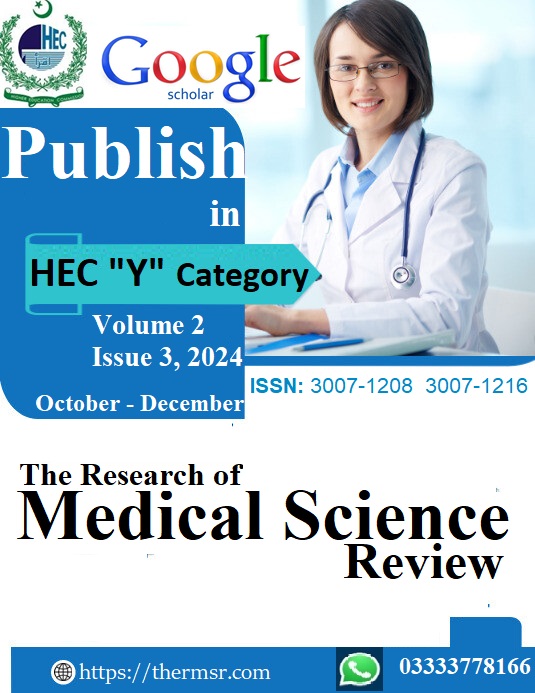AWARENESS AND MISCONCEPTIONS REGARDING VAPE SMOKING AND ITS HEALTH EFFECTS
Keywords:
AWARENESS AND MISCONCEPTIONS, VAPE SMOKING, HEALTH EFFECTSAbstract
BACKGROUND:
While significant research has been conducted on e-cigarettes and their influence on teenagers, there is still a shortage of data in specific regions, such as Pakistan, particularly regarding teenagers' perceptions and awareness of these devices. Despite the growing prevalence of e-cigarettes, there remains a significant gap in knowledge and understanding regarding their health risks. Many individuals, particularly in developing regions like Pakistan, perceive e-cigarettes as a safer alternative to traditional smoking, often overlooking the potential for severe health consequences, including respiratory, cardiovascular, and addiction-related issues. , this research is not only timely but also essential in addressing the growing public health concern posed by vaping. By shedding light on the awareness and misconceptions held by university students in Peshawar, this study aims to contribute to broader efforts to protect public health, promote informed decision-making, and prevent the potential health crises associated with vaping.
METHODS AND MATERIALS:
A cross-sectional study was conducted among 384 students from the University of Peshawar aged 15 to 40 years.The participants were evaluated for the prevalence of vape smoking and other related beliefs as well as their relationship with different demographic variables,smoking behaviors, and health outcomes.For statistical analysis chi-square tests were used for categorical variables and binary logistic regression was used to find the association between adverse effects and physiological changes with the use of nicotine-containing versus nicotine-free e-liquids.
RESULTS:
Out of 436 study participants, 77.1% had ever heard of e-cigarettes while 36% used them with 21.8% being e-cigarette-only users and 14.2% being dual users. Among e-cigarette users, there were significantly younger (<0.05). The pattern of e-cigarette use differed significantly between dual and e-cigarette-only users as the former had been using e-cigarettes more frequently, for longer duration, and with marked differences in the characteristics of e-liquids.22.2%-87.8% of all respondents answered correctly to knowledge questions with most of them being non-smokers. Among smokers, e-cigarette-only users significantly provided the most correct answers. The most commonly reported adverse effect by e-cigarette users was headache (49.7%) while the least reported one was chest pain (10.2%).Dual users were more likely to report adverse effects and the result was significant for all adverse effects except nose bleeding (p=0.085) and sleepiness(0.056). Although the majority(36.3%-66.9%) of all e-cigarette users. reported “no change” in physiological functions since e-cigarette use, a small proportion (20.4%-36.9%) reported improvement as well and dual users were more likely to report it than e-cigarette only users but the results were significant only for memory(p=0.013).
Downloads
Downloads
Published
Issue
Section
License

This work is licensed under a Creative Commons Attribution-NonCommercial-NoDerivatives 4.0 International License.














